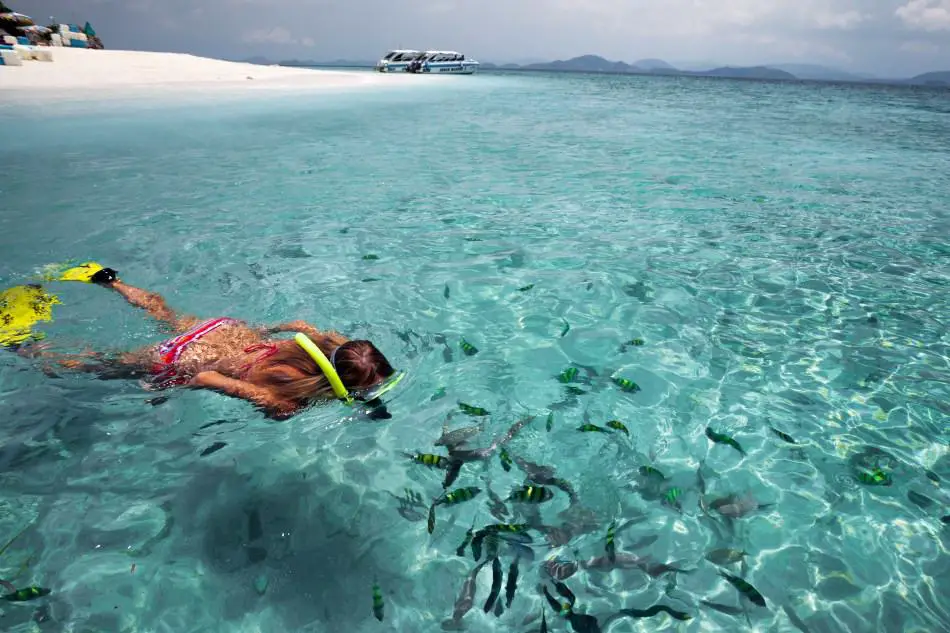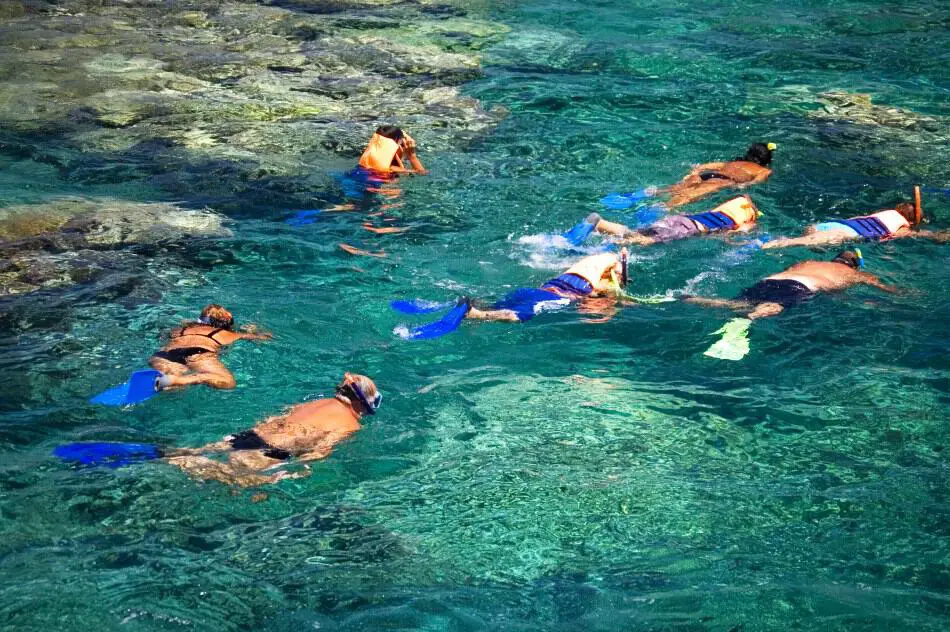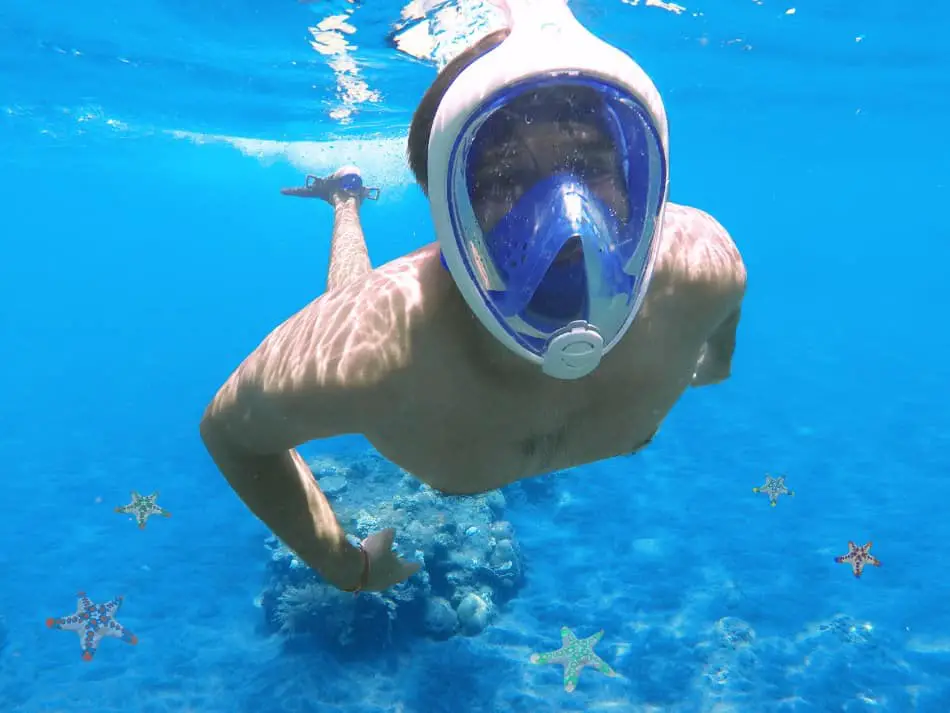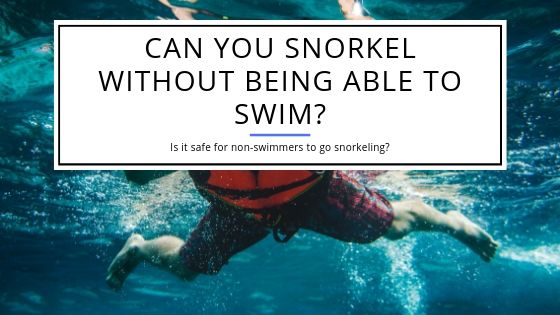Can You Snorkel Without Being Able to Swim?
Snorkeling is an inclusive water activity that is ideal for everyone, whether they’re five or fifty-five. Since it doesn’t involve going very deep into the water, even people with health restrictions can snorkel.
Do you need to know how to swim to snorkel? Can you snorkel if you can’t swim? Yes, you can. With some limitations and you have to consider some important factors. The probably easiest way is to use a snorkel vest which will keep you afloat and safe. You can also make sure to stay in shallow water that allows you to stand up at any time.
Choosing the Right Location
Snorkeling is possible close to the shore, but if you truly want to have an exciting experience you’ll have to go a little further in the water. The bigger, more exciting fish and other sea creatures are not very close to the land.
When you start out, just paddle in the shallow water with your snorkeling equipment. Venture out further with a snorkeling buddy or a guide to help you out in case you face any difficulties in staying afloat.
At first, you may accidentally snort some salty water or even swallow some of it, but it’s all part of the learning process, and it can even happen to people who are excellent swimmers. You can also use a dry snorkel which prevents water from coming down the tube and reduces the risk of swallowing water. This can help with putting you at ease in the water as you won’t be anxious about possibly breathing water into your lungs.
Choose your snorkeling destination carefully. There are some places which are particularly friendly towards beginners and non-swimmers who want to snorkel.
Getting the Right Equipment
Snorkeling requires relatively less equipment and gear as opposed to scuba diving. The main gear includes a snorkel mask, a breathing tube, flippers and for beginners, a floatation device. The floatation device will keep you afloat no matter what happens so you can freely move around and explore without the risk of suddenly going under.
The Flippers
If you’re a beginner, flippers are likely to be the most complicated part. Make sure you get the right size of fins for snorkeling: if they’re too small, your feet will get cramped and make it hard for you to paddle your feet, if they’re too loose, you might drop them while you’re in the water.
Flippers may either be long or short: while the long ones allow for faster movement in the water, for non-swimmers and beginners, short-finned flippers are recommended since it’s easier to change direction and move around in them.
If you want to avoid bruising and scraping on your feet, you can even use thin socks initially till you get more comfortable with your flippers.
Side Note: Make sure that once you put your flippers on, you walk very carefully since there is a chance of you tripping over the elongated part of the flippers. Many people recommend walking backward to avoid falling over.

The Snorkel Mask
The mask consists of an eye mask, which prevents water from getting into your eyes and also prevents it from entering your nose. A snorkel tube is attached to or an integrated part of the mask where one end fits into your mouth and the other allows exhaled carbon-dioxide to escape.
The snorkel mask should be fitted properly so that it doesn’t allow you to breathe through your nose at all. Ideally, the band should be just below the broadest part of the back of your head.
For those who wear glasses, it is recommended to make use of magnifying lenses in order to see more clearly underwater.
Side Note: Although rented snorkel tubes are safe and hygienic to use, if you have extra hygiene concerns, you might consider buying a snorkel tube and other gear of your own.
The part of the snorkel tube which fits into your mouth has an indented area of where it fixes onto your teeth. If fixed properly into place, it will allow you to breathe through your mouth comfortably without having to open your mouth.
Make sure you’re not clamping the mouthpiece too hard because this will make your mouth really sore afterwards. Sometimes, this can happen subconsciously so just try and stay relaxed and not hold your mouthpiece too hard.

Does Using a Snorkel Vest Allow a Non-Swimmer to Snorkel?
If you’re a non-swimmer and you do not know how to swim to snorkel, make sure that you have a snorkel vest, life jacket, or raft with you. Choose a vest or flotation belt that lets you put your head underwater since most life jackets are designed to make sure it DOESN’T go underwater.
Once you start feeling more comfortable in the water, you will notice that your body has a level of buoyancy naturally, and even slightly paddling your feet can keep you afloat without any extra effort.
If you’ve just started out, a snorkel vest will allow you to snorkel comfortably (Best Snorkeling Vest Reviews – Buyer’s Guide) and put your head in the water. it is advisable to keep using one even after you’re comfortable in the water as a safety net.
So, do you have to know how to swim to snorkel? Not necessarily if you use a snorkel vest or flotation belt (Best Flotation Belts for Snorkeling and Swimming Review) to keep you afloat.
Taking the First Step
Before you actually start snorkeling, the first step is to get acquainted with the water. Test your comfort level in a swimming pool where you can use a float belt to keep you afloat while you test out how to move around in the water.
Getting Rid of Any Doubts
Some people are too scared to get into the water. Around 2/3 of Americans have a fear of getting into deep waters. However, at some point, you may have realized that you want to get over this fear and snorkel. Start off by simply splashing your face and hands with water from the swimming pool.
Move on to submerging your feet in the water and eventually stepping in and moving around in the shallow area. As far as putting your head underwater is concerned, initially, just put your mouth underwater while your nose is still above the surface. You will notice that you can still breathe. Once you’re more comfortable try submerging yourself completely for a few seconds.
This will take time and effort, but if you’re truly interested in getting over your fear, with a little dedication you’ll be ready to step into the ocean. Trust us when we say that the view under the surface will definitely be worth it!
Taking it Slow
If you’re a non-swimmer who is snorkeling for the first time or is still relatively new to snorkeling, it is essential to be accompanied by a guide.
This guide will be a trained professional who will help you get comfortable with the water, waves, and all and will be able to assist you in case you feel like you’re losing control in the water. If you don’t have a guide, you should still have a snorkeling buddy to be there for you in case of an emergency.
Initially, when you walk on the ocean floor in the shallow parts of the water, it might feel a bit strange. Avoid stepping on corals or large rocks. The rule is to keep looking forward, not looking down. This will help you see if there are any things to avoid ahead and give you a great view of the fish.

The Final Answer: Can Non-Swimmers Snorkel?
The simple answer is yes, non-swimmers can snorkel. If you don’t know how to swim, you can still go snorkeling. It would be better though if you were knowing how to swim and had basic swimming skills.
If you’re not knowing how to swim then just need to at least be comfortable when you’re in the water (shouldn’t have any fear of drowning etc.) and have the basic ability to float around in one place or paddle around a bit. Again, at least basic swimming skills would make snorkeling easier and safer!
For people who can’t swim, snorkeling should initially be practiced close to the shore, and eventually, they can move further into the water, but even then, it is advisable to stay close to the boat/cruise. Over time, they themselves will notice that they can paddle around in the water and develop a semblance of a stroke.
It would be advisable to use a snorkel vest or life jacket for safety reasons. That advice even stands if you know how to swim as those flotation devices are helpful and make the snorkeling experience more comfortable.
With the proper equipment, guidance, and precautionary measures, snorkeling can be a fantastic experience. The incredible views of life in the ocean can be very calming and will go a long way in making comfortable in the water.
The main thing is not to panic at any point, stay calm, and most importantly, to have fun. And remember to have someone with you in case of emergencies!

